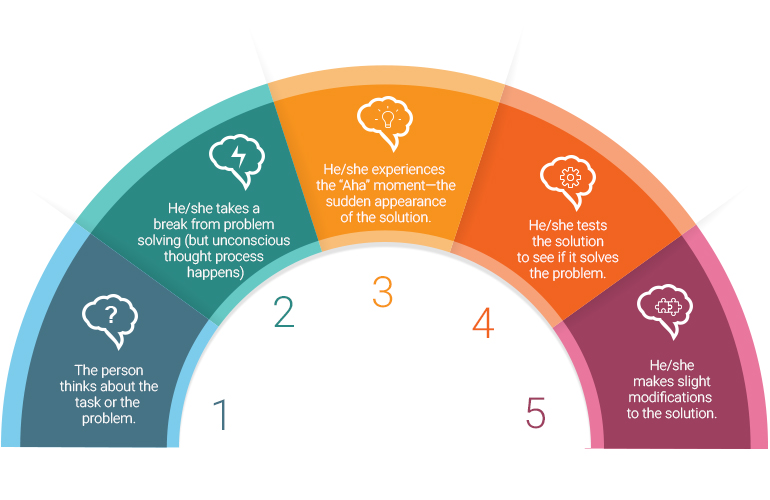INTRODUCTION TO CREATIVITY
I’m sure you have been told before, “This project allows you to be creative,” “Think outside of the box,” or simply “Try and be creative.” But, have you ever wondered what exactly creativity is?
To put it simply, creativity is a problem-solving process where the answer allows you to reach your goal, is practical, novel, and useful.
Researchers and theorists have defined creativity in terms of the characteristics of the person and in terms of the process itself. I would like to go with this definition by Amabile (1988), “Creativity is the production of novel and useful ideas by an individual or small group of individuals working together.”
Check out this interesting comic strip depicting Archimedes’ Eureka moment. http://archimedespalimpsest.org/images/kaltoon/
The story goes that Archimedes was asked by the king to determine if a new crown is made of pure gold. Archimedes was at a loss until an unexpected event triggered his creative solution – bath time.
All of us I’m sure have experienced such a situation in which the solution to a problem surfaced while we were not consciously thinking about it. This sudden appearance of new ideas is called “insight”.
THE CREATIVE PROCESS
The process of creative thinking happens in different stages:

Now that you have an understanding of what creativity is, let us examine how creativity can be enhanced at our workplace. So, what kind of jobs do you think require creativity?
You may have thought of a painter, or an architect, or even perhaps a cunning salesperson (“creative” is one way to put it…) but every job requires creativity. Studies show that the top performing companies in the world encourage employees at every level to solve problems to make things new and better. A study by Amabile M, Teresa, A Model of creativity and Innovations in Organizations, 1988, shows that several personal and organizational factors influence creative thinking—positively and negatively.
Can you identify with any of the above factors as playing a role in your creative thought process? Try to identify those personal factors in yourself that enhance your creativity. The goal is to retain and enhance those factors while adding new ones to help you think in different ways. If you identified personal factors inhibiting your creativity, be happy that you are aware of them and work on overcoming them.
As a manager, remember, management decisions have an impact on the creativity of employees. So by instilling creative friendly factors you can ensure that you are fostering a creative environment for your team and enhance their creative capacity.
To Conclude, creativity is a capacity that we can all learn to use more effectively. I hope this article helps you and your organization cultivate creativity. And if you found this interesting, have a look at this article on Critical Thinking.




